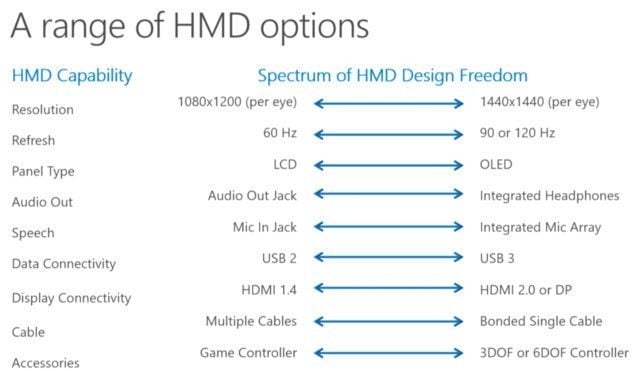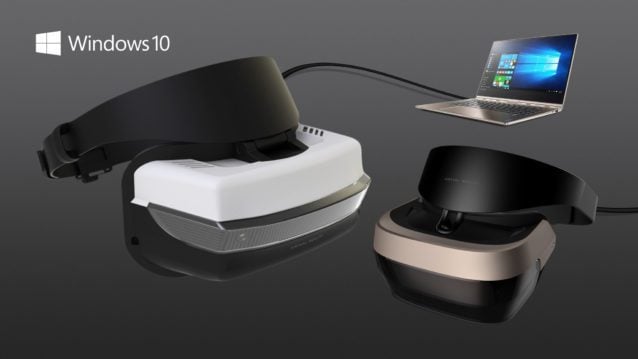
Virtual reality is becoming a mainstay feature within the video game industry, seemingly growing by the day. Last year Microsoft announced their own entry into the growing market, and with a starting price of $299 the company’s own efforts are sure to become the most affordable entry point, undercutting the likes of Sony’s PlayStation VR, HTC Vive, and Oculus Rift that dominate the market.
At the WinHEC (Windows Hardware Engineering Community) events this past December, more details were revealed on the headsets. A quick recap of the minimum hardware requirements shows the software giant’s devices won’t require a behemoth of a PC, thus making it accessible to most modern Windows 10 machines:
- 4GB of RAM
- USB 3.0 Port
- Graphics card supporting DirectX 12
- 4 CPU cores, including dual-core processors with hyper-threading
All of Microsoft’s partners—Acer, Asus, Dell, HP, and Lenovo—will be required to offer devices that meet these specifications for the entry-level. Where it gets interesting however is the range of hardware ability between mainstream headsets and the high-end.

The mainstream headsets will offer 1200×1080 resolution per eye, the same resolution as the HTC Vive and Oculus Rift for a fraction of the price. On the upper end, Microsoft expects partners to offer up to 1440×1440, which would outpace everything currently on the market.
The difference between the three, at least concerning Microsoft’s entry point offerings, is the refresh rate. Offering just 60Hz at 1200×1080 versus the 90Hz for the Vive and Rift could prove to be a problem for the user experience as proven in the past. Once again, however, the upper end will offer refresh rates equaling or outpacing everything else currently available.
As one would expect from an affordable device, there are going to be compromises. Entry level panels won’t be outfitted with the same OLED displays found in the competition’s headsets, and will instead opt for an LCD screen. Equally interesting is the affordable devices will be packaged with a game controller, whereas premium HMDs will offer either a 3DoF (Degrees of Freedom) or a 6DoF controller.

With serious VR gaming likely being out of the question for the entry-level panels, this is still a step in the right direction. The fact remains that Microsoft stands to make a bigger impact in the market with several affordable (and attractive) options from its partners.
There’s little doubt the upcoming headsets will play a pivotal role in Project Scorpio’s strategy when it’s released later this year, but how Microsoft intends to play that role remains to be seen. If we had to bet, we’d lay our cards on something being revealed at E3 in June.
The first devices will be available some time after the Creators Update, that will introduce new creativity and gaming experiences when it arrives Spring 2017, and will be available for free to all Windows 10 users.
Stay tuned to GTPlanet for more.
See more articles on VR and Windows 10.










